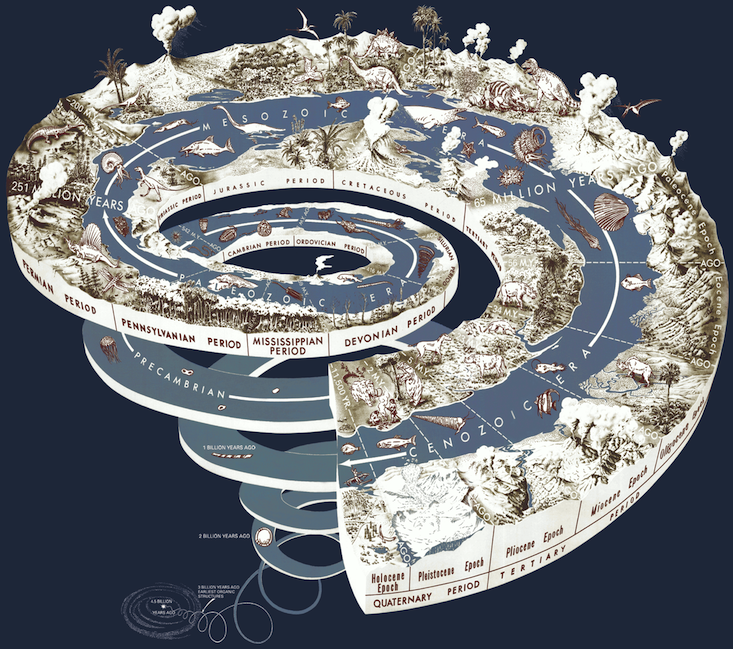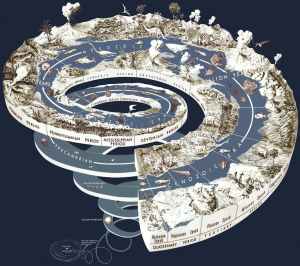Are We in the Anthropocene Yet?


By Zach St. George | Nautilus | May 23, 2016
In the early 1990s, a few miles west of El Kef, a town in Tunisia, geologists set a small golden spike in between two layers of clay that remains there to this day. They wanted to mark the tiny yet striking layer of iridium—a hard, dense, silvery-white metal—sandwiched in the middle. It was deposited by debris falling from the atmosphere all over the world, 66 million years ago, after an asteroid hit the planet and wiped out 75 percent of Earth’s plant and animals species, including the dinosaurs. Geologists now recognize the iridium layer, no matter where it’s found, as the boundary between the end of Mesozoic era and the beginning of Cenozoic era that, as you can see below, continues to this day.
Continue reading on Nautilus.
